Amere 10-minute walk across busy Route 58 from the polyglot sidewalks, hotels and souvenir shops of Kokusai-dori, the faintly grubby, undulating Chinese boundary walls of a green enclosure announce the presence of a garden known as Fukushu-en.
Somehow it doesn't feel in the slightest bit incongruous to be visiting a Chinese garden in the city of Naha. Okinawan emissaries sent from the Kingdom of Ryukyu to pay tribute to the court of the Ming Dynasty (1368-1644), of which it was a tributary state, would have been exposed to Chinese gardens on many occasions.
As well, goodwill settlers sent from Peking had lived in the Kume district of Naha since as early as 1393. The fresh social ecology they created through the dissemination of skills in governance, religion, music, food, shipbuilding and court protocols meant that, by the early 15th century, Naha's harbor was densely packed with Chinese boats.
In an acknowledgement of those links, Naha City and the rich trading port of Fuzhou City (in present-day Fujian province) collaborated in 1991 on creating a garden that would celebrate their historical ties and the sister-city status they had then enjoyed for a decade.
All the materials used in the garden's construction came from Fuzhou, including the wood and stone. The 8,500-sq.-meter garden, designed by specialists from Fuzhou, was divided into three sections: Light, Shadow and Brilliance.
Refined gardens represent the evolution of seminal societies into civilizations. The intellectual wealth of the Chinese garden represents two and a half millennia of experimentation.
Anyone interested in the Japanese garden would do well paying heed to the prototypical designs of the Chinese model. This is even more imperative when considering Okinawan gardens, where the influences from mainland China are most evidently manifested. In both garden types, however, the essence of design centers on the primacy of the inner form of beauty over outer form.
Chinese gardens reached their acme of perfection during the Ming (1368-1644) and Qing (1644-1911) dynasties. Yet as it is quite compact, Fukushu-en also reflects the style of the earlier Eastern Jin Dynasty (1115-1234), when there was a distinct tendency to emphasize meaning and function over scale. And, though it may lack some classic design components such as barges made from crab-apple trees, grottoes and jade halls, Fukushu-en is still a skillfully wrought compendium of Chinese garden elements.
Chinese gardens are typically divided into landscape units intended to create individual scenes and an interesting graduation of space that intentionally blocks a view of the entire garden. In the hands of skillful designers, space represents an opportunity — and a restricted space moreso.
In this regard, the thoughts in the heads of Fukushu-en's creators would likely have included a mind-expanding statement contained in the 12th-century "Yunlin Shipu" ("Cloud Forest Inventory of Rocks"), by the scholar Du Wan, which maintains: "Within the size of a fist can be assembled the beauty of a thousand cliffs."
Entering Fukushu-en, the visitor at once faces a wall which channels you to the left along narrow, zigzag paths past confined pavilions and embankments. This section then debouches into bright, open space.
Japanese gardens often combine still ponds with more audible waterfalls. However, the effect is amplified in the classic Chinese garden, where limpid water whose muted gurglings a visitor must strain to detect is contrasted with thunderous waterfalls.
At Fukushu-en, though, there is no such kinetic contrast, rather rippling waters and circling eddies are to be inferred in garden courtyards that are covered in pebbles — a charming effect much replicated in Japanese gardens featuring raked pebbles.
The latticed windows of the pavilions and corridors that run through the gardens, and the moon-shaped entrances in walls, are designed to show the landscaped images seen through them as framed paintings. Many of these openings, carved with flower, plant and bird motifs, are art works in themselves.
The main elements of Chinese landscape designs were rocks, the Earth's bones, and water, its veins. If stone arrangements are the skeleton plan of Japanese gardens, rockeries provide the schemata for their Chinese antecedents.
Stones in Okinawan gardens, with their pitted rock clusters, blow holes and sharp edges are, perhaps, closer to the fabulist forms of the Chinese model than to the smoother, more suggestive ensembles of the Japanese garden. Here, the latter are replaced with the more assertive stalagmite-like shapes seen in mainland gardens.
The revered garden designer Ji Cheng (1582-1642) wrote, "Though man-made, the garden looks like it is springing from nature." If anything, Fukushu-en has the feel of a botanical garden, the flora bearing a close resemblance to that found in southern China, and to much of the plant life I have seen on the tropical island of Hainan. Sections of the landscaping reminded me of the small inner gardens at the Old Summer Palace outside Beijing, or exquisite designs such as the Humble Administrator's Garden in the southern city of Suzhou.
Fukushu-en is home to an efflorescence of plants and flowers associated with Okinawa, but which are perfectly consonant with the tastes of southern China. Growing naturally in these climes are bougainvillea, champak, hibiscus and exotic trees and shrubs such as ficus, sago palm, bird's-nest ferns and pandanus.
The Chinese were perhaps the first to recognize the use of gardens as places for quiet cultural discourse, and as meditation devices. Lao Zi, the 6th-century B.C. Taoist philosopher, spoke of gardens as spiritual aids that could promote a state of emptiness that could lead to wisdom and fulfillment.
Lightly visited, Fukushu-en is an ideal place to sit quietly with a book of Chinese poems, or to contemplate visions of stone and water while sipping from a bowl of fragrant tea. You'll have to bring your own refreshments along, though, to this very civilized garden. With the exception of a vending machine selling sachets of fish food for the carp, there are no shops inside Fukushu-en.
Stephen Mansfield's new book, "Japan's Master Gardens: Lessons in Space and Environment," is published this month.



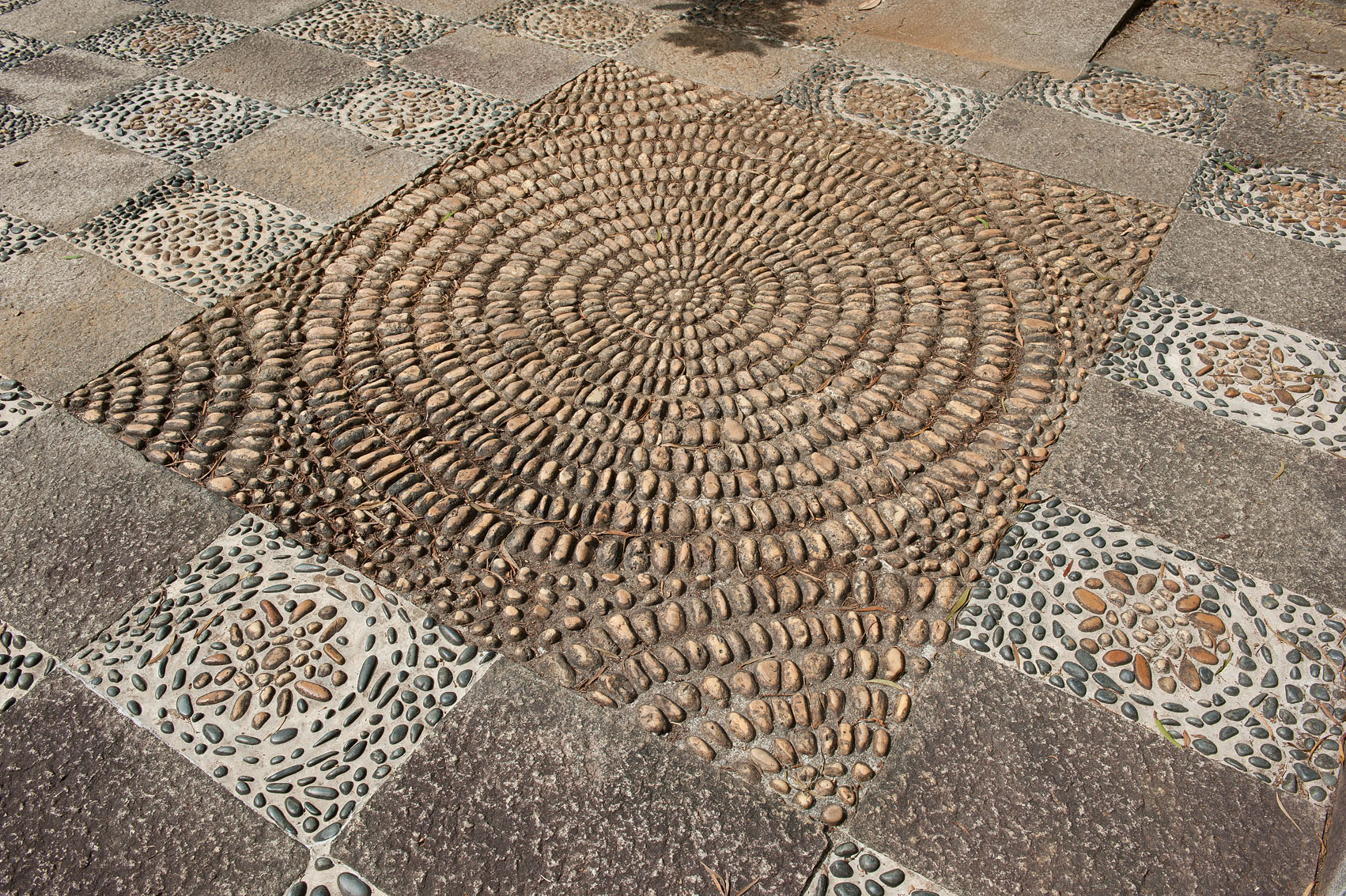
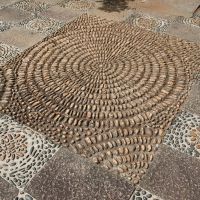
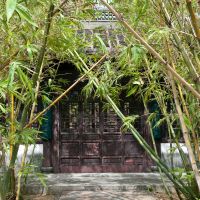
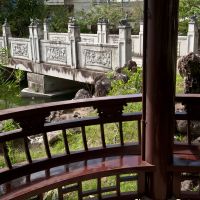
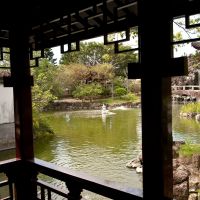
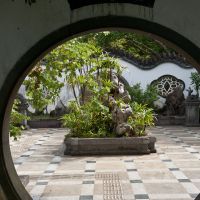













With your current subscription plan you can comment on stories. However, before writing your first comment, please create a display name in the Profile section of your subscriber account page.